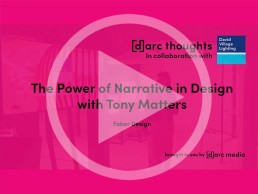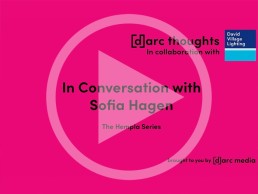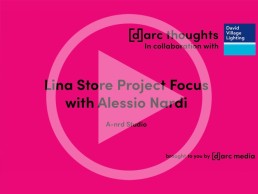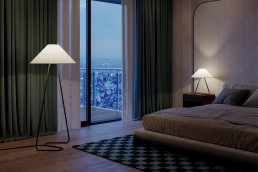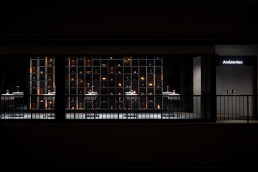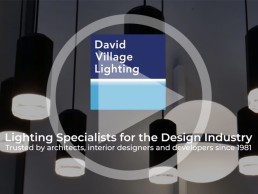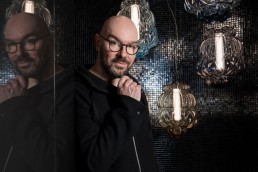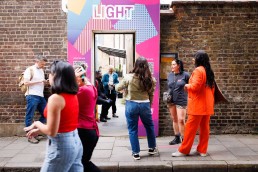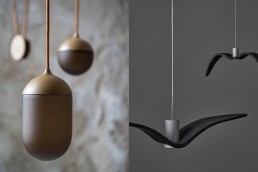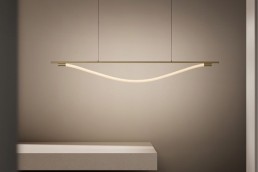The Power of Narrative in Design with Tony Matters, Faber Design
https://vimeo.com/1092744531
You may well have heard the term ‘narrative’ used about design, particularly within the sphere of hospitality spaces such as restaurants; in this presentation, interior designer Tony Matters of Faber Design, discusses in more detail how the idea has become more widespread in design, even though many clients may not fully understand what it means.
In Conversation with Alex Dauley
https://vimeo.com/1092732581
darc magazine editor, Sarah Cullen sits down with interior designer Alex Dauley - a storyteller, a visionary, and a passionate advocate for inclusivity in the design world. Her journey into interior design is unique, marked by her fearless creativity, authenticity, and unwavering commitment to breaking barriers. As a champion for diversity and representation, Alex's leadership and dedication shine through in every project, creating innovation and change in the industry.
In Conversation with Sofia Hagen
https://vimeo.com/1092742550
Sofia Hagen x Studio Marmi bring together the latest in innovative 3D printing technologies and traditional craftsmanship to create a timeless design dedicated to mindfulness. Hempla is a meditation furniture set that creates a sanctuary to relax and meditate in a variety of configurations.
Ahead of the Hempla meditation session happening at Design Fields later that day, designer Sofia Hagen sat down with [d]arc media editor Sarah Cullen to discuss the story of Hempla Series so far, her partnership with Zumtobel during Milan Design Week, and what she hopes the future holds for the product.
Project Focus Lina Stores, London, UK
https://vimeo.com/1092738869
Alessio Nardi of A-nrd Studio sits down with [d]arc media editor Sarah Cullen to discuss the design directive behind the stunning conversion of the historical grade II listed building, originally built in 1868 as a bank. The space is made up of a ground-floor all-day restaurant and a former vault basement, which takes on the persona of Bar Lina – an Italian aperitivo bar. Both with their own identities yet blending seamlessly as one.
WATG and Wimberly interiors appoint new senior leadership role
(USA) – Global luxury hospitality design firms WATG and Wimberly Interiors have announced the appointment of Molly O’Keefe as Associate Principal and Senior Director of Client Services.
O’Keefe brings over a decade of experience in design-led business development and will support the studios’ strategic growth and client engagement across the Americas. Although based in Chicago, she will collaborate closely with WATG and Wimberly Interiors offices in Tustin, Los Angeles, Dallas, Honolulu, and New York.
In her new role, O’Keefe will focus on enhancing industry relationships and expanding the firms’ project portfolios, with a particular emphasis on the luxury and lifestyle hospitality sectors. Her experience spans the intersection of design, brand strategy, and business development, and she is recognised for her ability to align creative vision with client objectives.
“I have respected WATG and Wimberly Interiors’ successes over the years, and I am honoured to be joining such an inspiring team that is pushing our industry forward, says O’Keefe. “I’m excited to harness the global power of the WATG brand and build upon significant achievements in the Americas, further cultivating our relationship and key partners and driving growth across our diverse portfolio of projects.”
Monica Cuervo, managing director of the Americas WATG and Wimberley Interiors, adds, “Molly is an exciting addition to our talented leadership roster. Her reputation, knowledge, global perspective, and deep immersion in the industry make her a trusted advisor across a range of market segments and brand categories. We welcome her to the studio and look forward to continuing to build our lifestyle and luxury offerings across the Americas.”
Contardi – Hat
(Italy) – Hat collection is the new lampshade archetype born from the collaboration of Italian lighting brand Contardi and designer Paola Navone of Otto Studio.
The lampshade is described as the perfect balance between past and present, drawing inspiration from the 1950s aesthetics and blending it with contemporary design. It comprises a floor, table, and pendant lamps, which are all unified by a white cotton or Tyvek lampshade. Each piece is accented with rope detailing, either wrapped around the metal stand of the table or the floor lamp or used as a suspension for the pendant version.
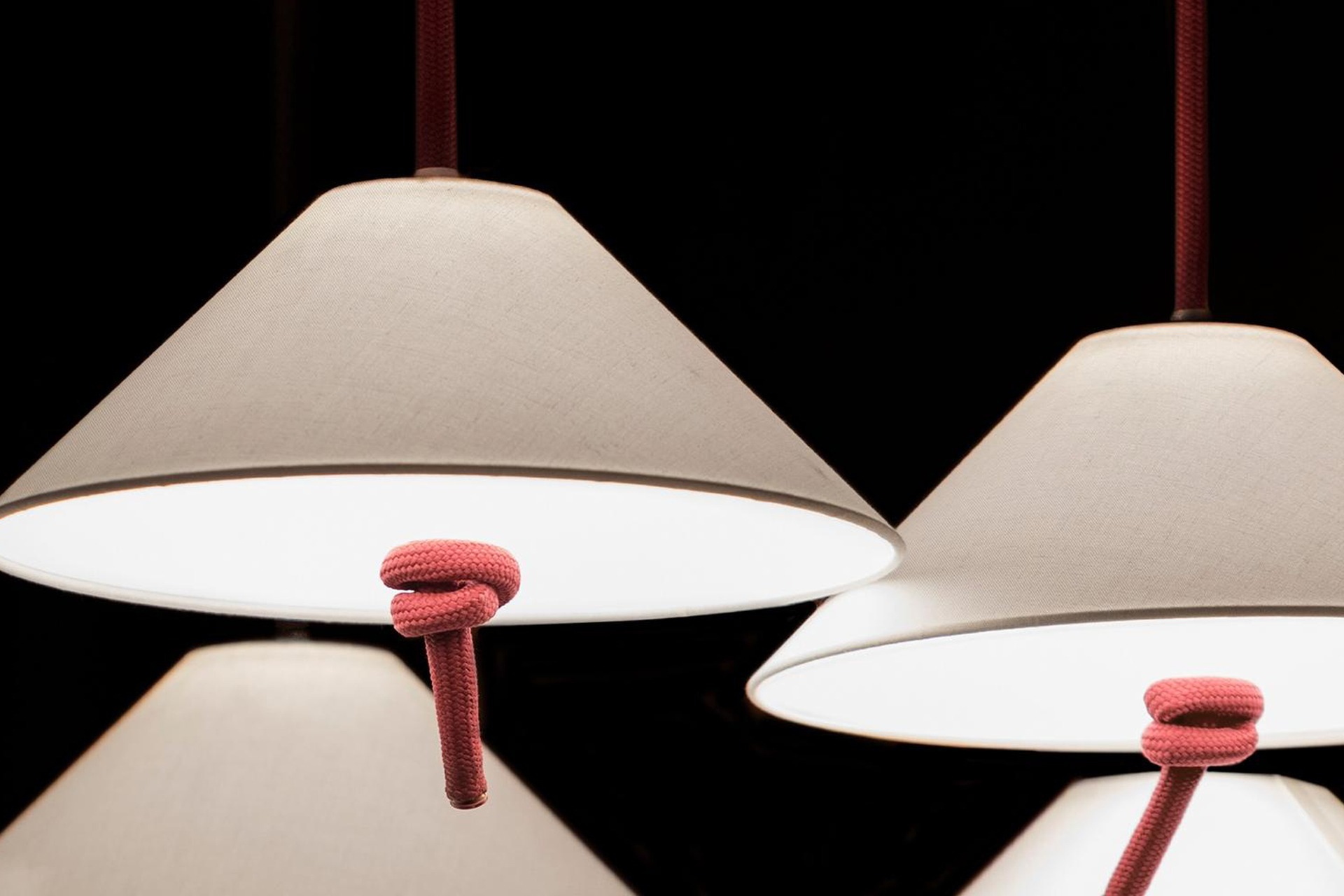
Dominico Diego of Otto Studio says: “We desired to create a versatile object that could fit harmoniously into context without losing its character. We wanted to design something that was both ordinary and extraordinary, combining simplicity and sophistication, with a playful touch.”
The option for customisation is available, allowing the collection to be adapted to multiple environments, from residential to hospitality.
Ambientec opens gallery in Tokyo’s AXIS Building
(Japan) – Ambientec opens its first Tokyo gallery on the second floor of the AXIS Building in Roppongi, a key hub for Japanese design, showcasing the brand’s portable lighting products as both functional and sensory.
Founded in Yokohama and led by president Yoshinori Kuno, Ambientec is an established brand for decorative lighting known for blending design and technical precision, drawing on its background in underwater photography equipment. The gallery, designed by Koichiro Oniki, takes a minimalist, science-lab approach, with modular displays and precise pin-shot lighting to highlight each product’s sculptural form. His vision - interpreting the product as a sculptural object - has been translated into a display inspired by the structure of a scientific showcase that, through a laboratory-like approach, allows visitors to experience how the light performs in real environments.
A temporary display also appeared on the fourth floor for the launch, featuring four new collections: Vosco by Nao Tamura, Barcarolle by Yoshiki Matsuyama, Still by Ryuichi Kozaki, and Hymn Pro by Hiroto Yoshizoe. Each was introduced to the Japanese public for the first time following previews at Euroluce 2025. During the opening event, a talk with the designers of each collection and Yoshinori Kuno, the brand’s founder and representative, was held.
The gallery is accessible via Shiro Kuramata’s distinct staircase and offers both public and industry visitors a quiet, tactile space for engaging with Ambientec’s vision of lighting.
Residential Lighting Trends
https://vimeo.com/1092112781
At this year's Clerkenwell Design Week, our panel of residential design experts discussed the latest challenges and trends within interior and lighting design for the home. Speakers include Joe Calver (Isla James Interiors), Toria Thorpe (Lighting by Plum) and, Jack Spivey (David Village Lighting)
Barovier&Toso appoints Luca Nichetto as Art Director
(Italy) – Barovier&Toso has appointed designer Luca Nichetto as its new Art Director, marking a major step in the brand’s strategic renewal. The move follows the recent hiring of the company’s first CEO, Andrea Signoroni.
Born in Murano and designer internationally recognised, Nichetto will oversee the evolution of Barovier&Toso’s visual identity, balancing the company’s 700-year heritage with a forward-thinking design approach. His role will cover product development, brand language, and the design of physical spaces.
“Ever since I was a child, Murano glass has been my first school – a living material capable of telling ancient stories and opening new horizons,” says Nicchetto. “Returning to Venice to take on the art direction of Barovier&Toso is deeply emotional for me; it feels like coming home.”
Signoroni says on the new appointment: “Nichetto’s contribution in creative and strategic terms will make a decisive contribution to strengthening the company’s positioning in the high-end segment.”
Early signs of the new direction were seen at Euroluce 2025 and in the redesign of the brand’s Venice boutique windows, both of which marked a first step towards a more contemporary and immersive narrative of the Barovier&Toso universe. The first collections under Nichetto’s direction will launch in early 2026, including new collaborations with international designers.
Clerkenwell Design Week Product Highlights
Junior Journalist, Ellie Walton, brings her annual product round-up from CDW25.
There was a time when Clerkenwell Design Week was just a quick stop on the calendar for the [d]arc media team – a flying visit, at most one day. Fast forward to today, and our presence has grown into a full-blown fixture, with our team immersed across three packed days. What began as a mission to scout the latest in decorative lighting has evolved into something much bigger: a full three-day talks programme at the House of Detention, multiple event partnerships, and a growing role in the wider festival narrative. Even with our name on the agenda, CDW remains a place of discovery. So once again, we’ve rounded up five products that made an impression.
Familiar faces and exciting newcomers filled House of Detention this year, kicking off with our long-time friends at Nordlux. A staple in that first vaulted chamber to the left, the Danish brand drew plenty of attention with its latest launch: the alabaster Glossy table lamp. Effortlessly stylish, it embodies Danish minimalism at its most refined. It was a treat to experience the lamp in person, especially after spotlighting it in our recent darc interview (issue #60) with founder Lone Penderson. Not only did Nordlux take home the Clerkenwell Design Award for lighting, but if there had been a prize for best tote bag, they’d have surely walked away with that too.
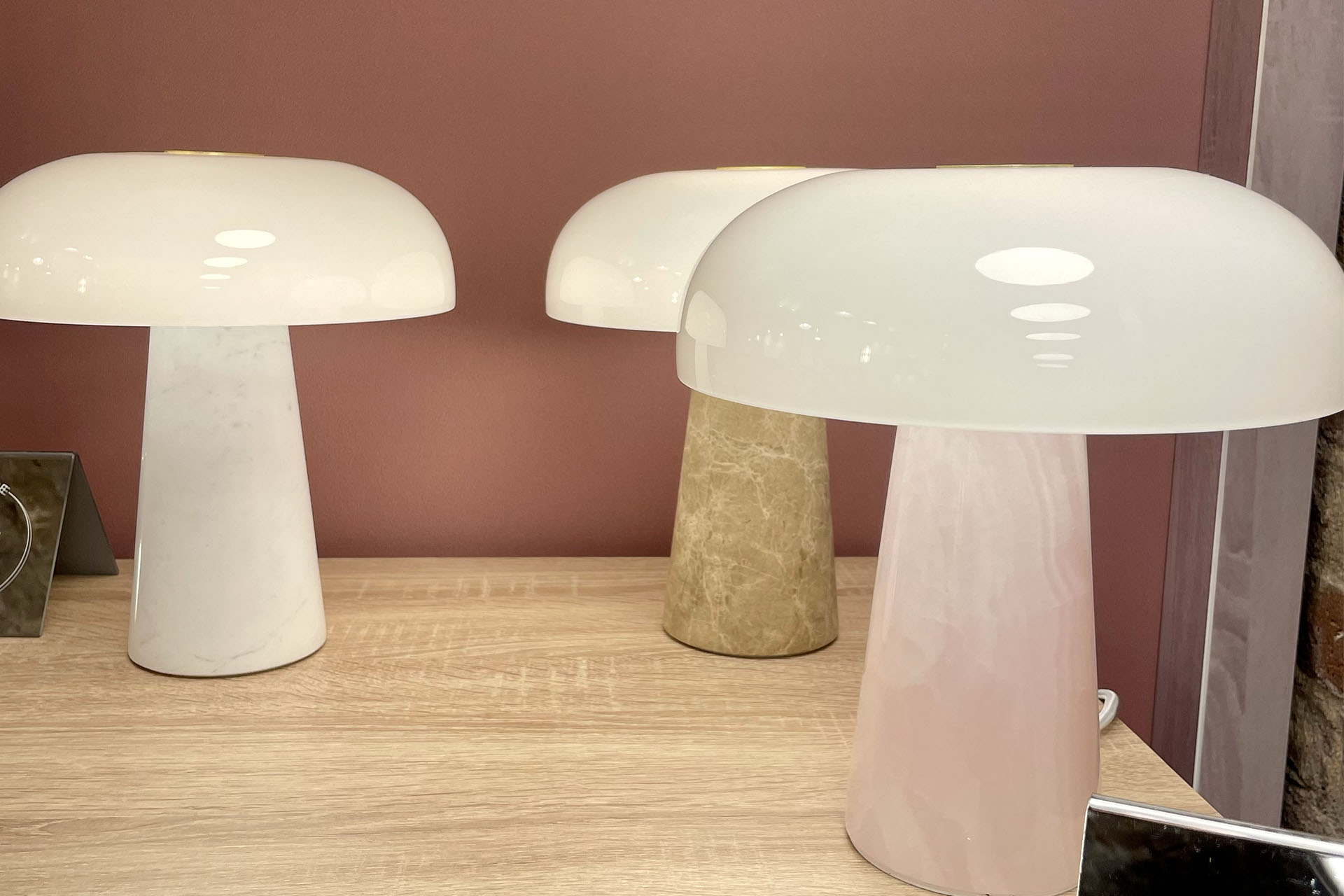
Another standout in the dungeons was Abalon Studio, led by the acclaimed designer and sculptor Ana Bridgewater. Her installation showcased a groundbreaking lighting piece crafted from bio Corallo – a newly developed 3D-printed material created in collaboration with studio Lowpoly. This pioneering porcelain-printable composite allows for intricate, sustainable design, aligning perfectly with Bridgewater’s ethos. Blending advanced material innovation with a biophilic design approach, the installation drew inspiration from the ocean’s fluidity. Organic forms unfolded into luminous sculptural arms, evoking the motion and elegance of underwater life. The result was both visually captivating and deeply intentional – a clear reflection of Bridgewater’s dedication to sustainability through low-impact materials and thoughtful production processes.
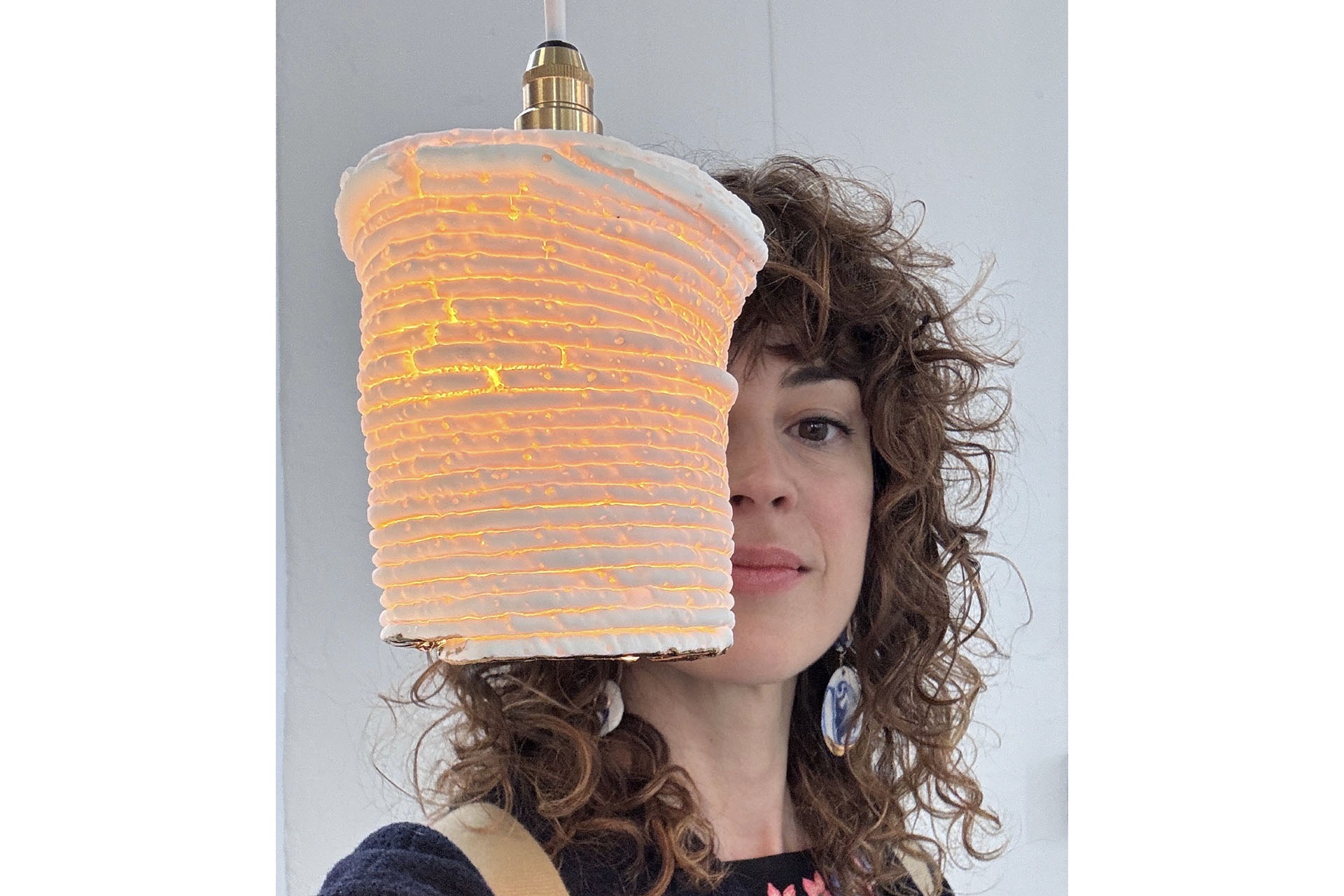
New to the show and coming all the way from the western hemisphere is Ro Sham Beaux, an American lighting brand that blends sustainability and craftsmanship into its lighting products. Founded in Charleston, the brand was turning heads with its array of hand-strung beads crafted from crystal, quartz, and post-consumer glass. darc’s personal favourite from the collection had to be the beautifully adorned Collette two-tier piece wall sconce, crafted with delicate chip quartz with a gold or nickel accent band as the finishing touch, which radiated sophistication and echoed the maritime energy of the brand’s coastal origins.
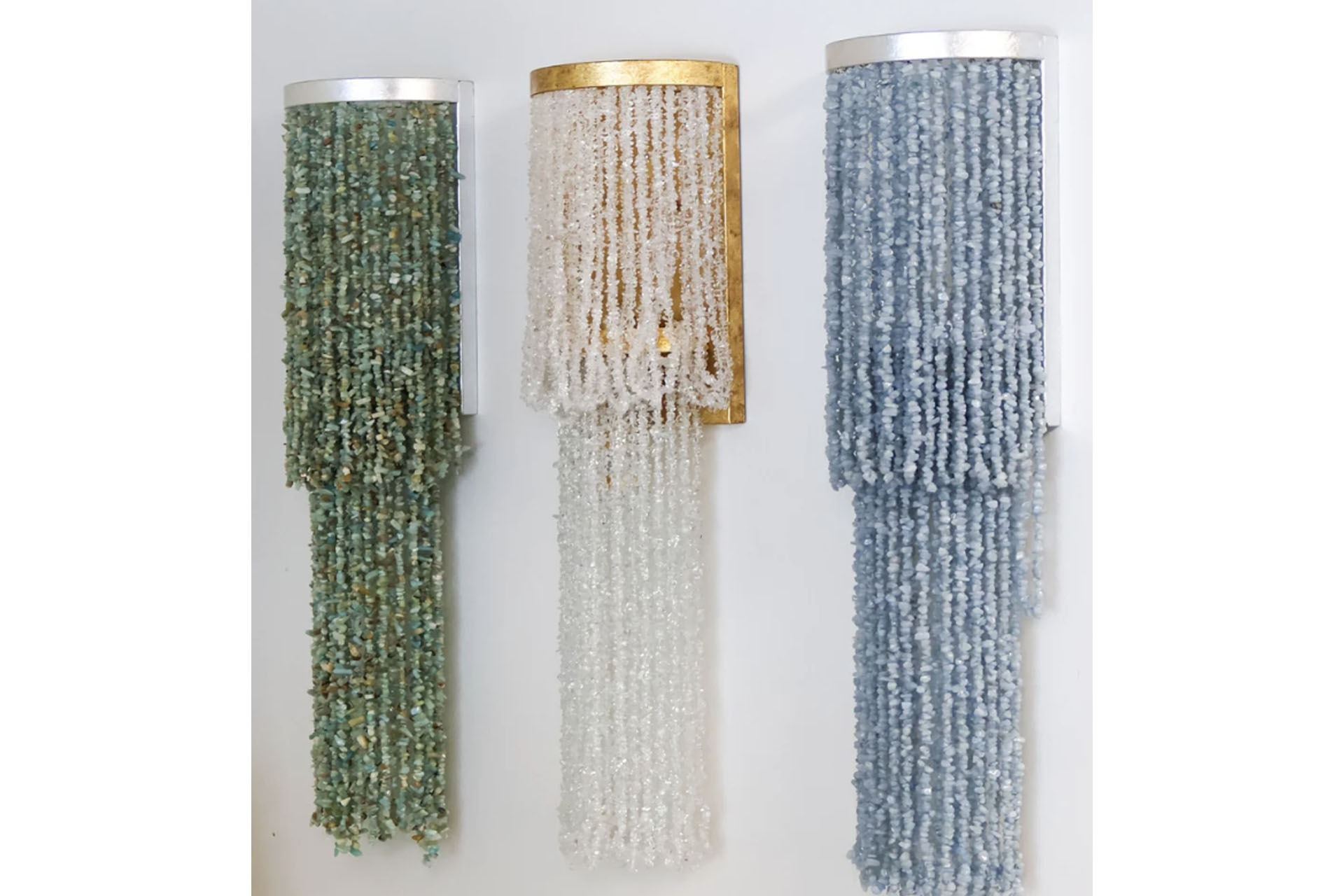
A fresh face at Light was North South Art and Design, a London-based furniture and lighting company focused on offering environmentally responsible and striking pieces. The brand’s work draws on the 400-year-old toy-making craft in India using sustainably harvested wood and dyed with non-toxic vegetable pigments to create bold and characterful designs. A standout piece was the Toli floor lamp, a striking sculptural statement that puts the interplay of light and shadow at eye level. Positioned along the route to the [d]arc thoughts space, it was nearly impossible to pass by without catching its dynamic presence out of the corner of your eye.

Meanwhile, on St John’s Street, there was quite the buzz in the J.Adams and Co showroom, which had plenty of new products that debuted during Milan Design Week. The British lighting brand showcased three new collections – Apex, Talbot and Strata. It was the Strata Circular, however, that truly stole the show. A bold new edition to the beloved Strata collection, pushing boundaries of fluted glass by transforming its linear form into a seamless halo. Available in a range of sizes, including an eye-catching two-tiered edition, it’s a dramatic statement piece, designed to elevate interiors with sculptural elegance and that essential wow factor.
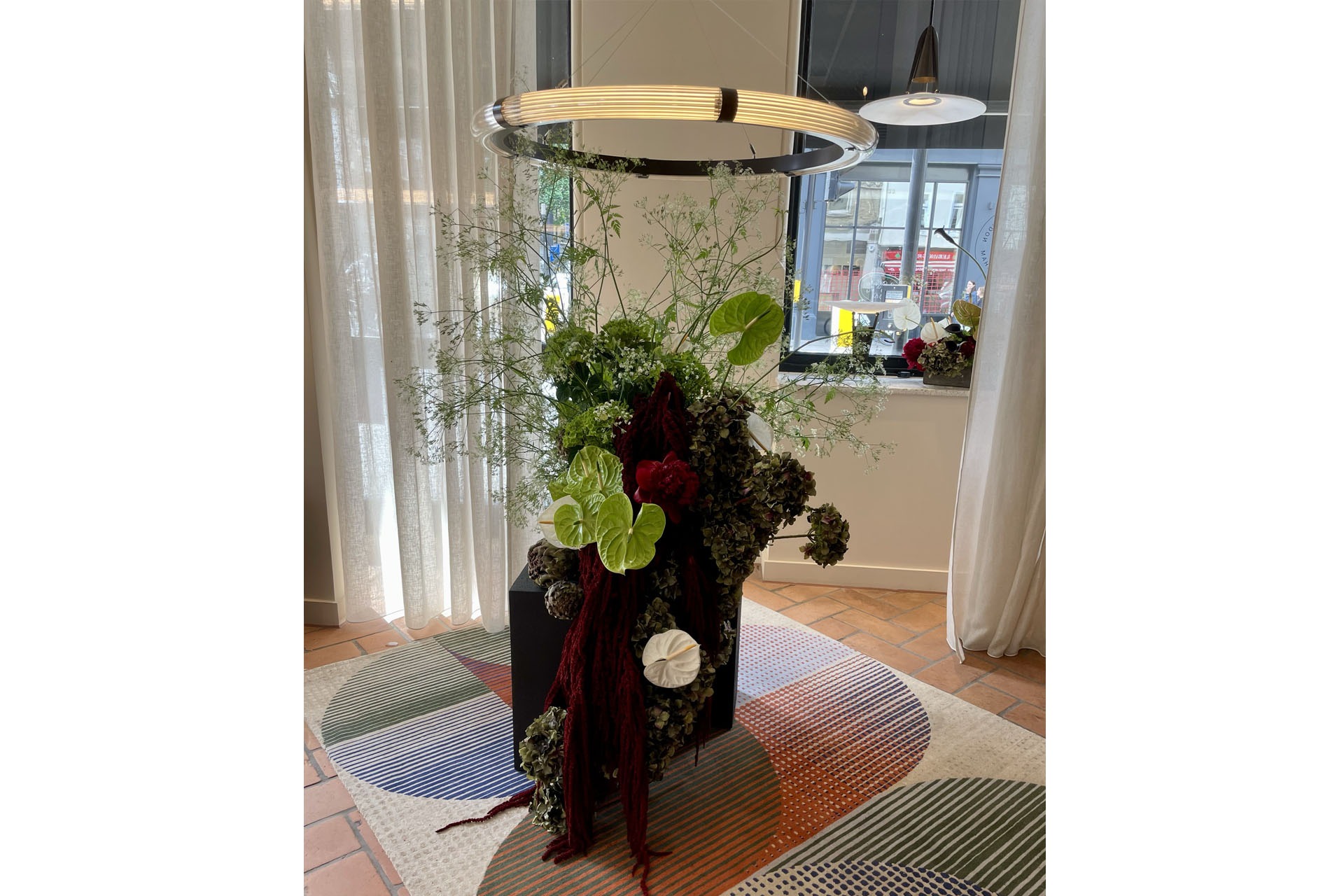
Brokis expands two existing collections
(Czech Republic) – Czech lighting brand Brokis has introduced two new additions to its portfolio with Planets Mini and Night Birds Mini, both scaled-down versions of existing bestsellers designed for greater versatility in compact or custom interiors.
Planets Mini, by design duo Vrtiška & Žák, continues the original collection’s use of weights and pulleys for easy height adjustment. The smaller format allows for single or multi-light installations, with glass shapes offered in sphere, cone, and capsule forms. A new smoke brown matte finish joins the existing smoke grey and triplex opal matte options.

Night Birds Mini, designed by Boris Klimek, refines the motion of the original collection into a more compact format. Each pendant is handcrafted through a two-step glassmaking process, resulting in unique textures and forms. The collection includes three shapes representing different flight phases and now comes in white, dark, and recycled Brokisglass variants.

Both mini collections retain the visual identity of their larger counterparts while offering increased flexibility for interior designers and architects.
Graypants expands Levity Collection
(Europe) – Designed in collaboration with Dutch design duo Studio Truly Truly, the lighting brand unveiled its refined Levity series with the introduction of a brass collection.
Originally launched as a study in contrast and control, Levity combines rigid metal frameworks with soft, draped fabric diffusers, resulting in an interplay between structure and movement. The new brass edition amplifies this tension with a warmer, more opulent materiality, aligning visual softness with a sense of tactile richness.
The Levity collection includes three main model types: Halo, Arc, and Bow – each offering variations in shape and scale to suit different architectural and interior settings. The Halo pendants and Bow linear lights feature integrated LED tubes encased in flexible silicone, sheathed in a translucent textile that emits a gentle, diffused glow. These design elements give the fixtures a sculptural presence without overwhelming a space.
Available in two sizes, Halo180 and Halo215, the pendants can offer either a subtle accent or a bold centrepiece. The Bow120 and Bow160 fixtures, with their elongated forms, are well-suited for dining tables, conference rooms or open-plan settings, while the new Arc models (Arc80 and Arc130) introduce a curved geometry that softens the linearity of the collection.
The new brass finish adds a refined edge to the existing models, blending warmth with minimalism and extending the versatility of the collection for both residential and commercial applications.
The series highlights how flexible materials and integrated lighting technology can be composed into forms that feel as emotional as they are engineered.
www.graypants.eu
www.studiotrulytruly.com


